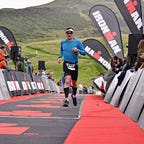Bikepacking Gear List
Update: I’ve written a new article, highlighting the changes. You can still read this one, for the main motivation is still valid, and then check the new one comparing the tweaks I made.
I’ve recently came back from a 2 weeks bikepacking trip in north of Spain (highly recommended) with my partner and I want to share some tips about things I learned about what kind of gear you need or don’t need.
One of the main motivations on writing such a list is that if you search online for bikepacking gear tips most of the times you find accurate descriptions of the gear used by ultra endurance bikepacking riders in epic self supported races like the Transcontinental race or the Silk Road race.
These gear tips may be useful in general, but you need to keep in mind that the main goal of those riders is to win the race: their gears are very minimalist, ultra lightweight, and comfort is not the main priority. The main goal is to cover the most amount of km in the least amount of time, resulting in often sleep deprived nights of riding.
If you’re travelling for fun, you’ll cover the same amount of km in much more time (often 3/4 times what those guys take), and probably comfort is one of the top priority. This results in different needs and different trade-offs regarding the gear you’re willing to carry.
For example you always find tips on the lightest 1 person tent or bivy, since most ultra-endurance riders are travelling solo. If you’re looking for a more spacious tent or if you’re travelling as a couple, it’s very difficult to find gear suggestions.
Without further ado here are my tips in random order of apparitions.
Gear list/tips
Bike/Bike Gear
- Bike: Bombtrack Beyond 1. Pay attention to the derailleur hanger, it gets loose as the screws tend to get loose and fall down. This is a known problem in the older models, due to a cut in the chainstay apparently to accomodate a rohloff hub. I realized it when going down hill my bike was suddenly unstable and wobbly.
Apart that, the bike is really great and I love it. - Saddle: Brooks Cambium C13 all weather. This is the best saddle I’ve ever had, no questions.
Bags
- Bikepacking bags: I swear by Missgrape, but you can find many examples of good bike bags.
I have a frame bag, a saddle bag, a top tube bag, and a handlebar bag.
The most important thing when choosing the equipment to carry is the packing volume. I’d say even more than weight. You can trade off a bit of weight if the packing volume is small. - Rear panniers. When you start packing camping gear (and food) you may notice that the usual bikepacking bags set is not enough to carry everything, especially if you don’t have a frame bag that takes the whole inside of your frame.
In addition to my bikepacking set, I use a minimalistic set of rear panniers, the Arkel dry-lites on a Tubus Logo Evo rear rack. - Extra bags. Always carry an extra bag or two for carrying around stuff when not on a bike or for unforeseen circumstances. For example the Sea to Summit nano backpack is a 18L backpack that is smaller than the palm of your hand when packed and weights 30g. Another one we used is the Exped Nano Carry-All.
I also carry an Exped Stowaway Duffle 50L for carrying around the bike bags when I need to remove them in transfers (trains, ferries, buses, etc). It packs small and it’s not too heavy (200g).
- Wraptie. Get a pair of wraptie straps, in small and medium size. They are great to secure your bike for travelling (on train for examples) or for any case when you need secure things to your bags/bike.
- Silca Sicuro Capsule. This is a great addition if you don’t have a full frame bag. It adds extra storage under the bottle cage, I use to store my tyre repair kit.
Camping Gear
- Tent. I carried a Nordisk Oppland 3 SI. Definitely in the heavy weight league, and a bit bulky when packed. As I said before the packing volume is more important than the weight, and this tent doesn’t pack small. I used a compression bag (a Sea to Summit compression Event in size large) to reduce the length of the tent and fit it in my handlebar bag. With the extra footprint and the poles the total weight is around 4kg.
On the other side the tent front porch is big enough to fit 2 bikes and the bags, and it’s a great tent.
At some points we may test the Terra-Nova Starlite 3, which packs smaller and it’s slightly lighter. - Sleeping Gear. Exped pillow and air mattress, and a Cumulus down quilt 350. They are ultralight and pack very small. Very recommended.
Clothing
- Merino. Merino. Merino. Seriously, there’s nothing better than Merino wool for outdoor gear. It dries very quickly, it’s odourless and very light. I strongly recommend ULD Copenhagen t-shirts and PEdALED cycling jerseys/base layers.
- Underwear. Don’t listen to the sirens to pack one single pair of underwear. Usually you’ll need more items than you think you need.
- “Civilian” clothes. If you’re not racing you need some clothes for when you’re not riding your bike, and walking in padded bib short may not be practical (unless you’re a triathlete). You can find clothes that looks great off the bike but are practical also on the bike. Example, PEdALED chinos, or Endura Urban Trousers.
Let me know if you find these tips useful, or if you have any comment or question!
This article doesn’t contain any affiliate link, but if you find it useful consider a small donation: bc1qhkrsnz82yxsddrwm8ecw3q5mdj7txylem7fwtl
or buy me a coffee.
